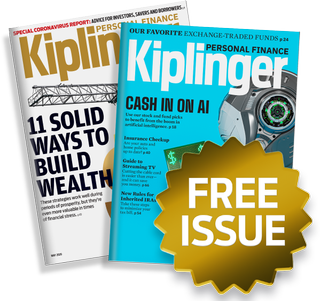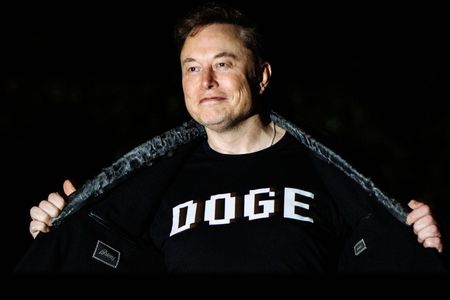Higher Prices Won't Deter Apparel Shoppers
Retailers -- except at the bottom end -- can look forward to brighter prospects.
No more sale signs blanketing clothing store shelves: Retailers’ ruthless inventory slashing is paying off. Stores cut their orders throughout 2009 to avoid repeating the fire sales needed in late 2008 to get rid of excess inventory. They got what they wanted: Clothing prices rose for the first time in 10 years last year. And they probably won’t come back down anytime soon. Retailers will do only selective discounting.
Despite the higher prices, consumers will buy more new duds, helping retailers put about 6% more money in the cash register. That’s double the likely average gain for retailers of all types. Last year, the opposite was true: Apparel sales declined by about 4%, while the retail sector as a whole lost only about 2%.
The fact is, for decades, apparel has been grabbing a smaller and smaller share of consumers’ dollars. Today it accounts for only about 3% of consumers’ total spending, versus 5% 20 years ago and 8% in the 1960s. That’s largely because though Americans are spending more on clothing than they did years ago, even larger chunks of their budgets are going to other goods and services. Health care, in particular, is soaking up a much bigger share, notes Adam York, an economist at Wells Fargo. Total consumer spending nearly tripled between 1990 and 2010, but apparel spending rose by only about 50%. And since the mid-1990s, steadily declining apparel prices have eroded apparel makers’ and sellers’ share of consumer spending as well.

Sign up for Kiplinger’s Free E-Newsletters
Profit and prosper with the best of expert advice on investing, taxes, retirement, personal finance and more - straight to your e-mail.
Profit and prosper with the best of expert advice - straight to your e-mail.
An uptick in apparel spending is good news for the economy. Apparel purchases are a good indicator of consumers’ willingness to spend on anything but necessities. And on that score, things are looking up. In a March survey by retail consultancy Kantar Retail, apparel was among the discretionary purchases gaining the most favor: The share of consumers planning to spend more on clothing for themselves and their children doubled from 2009 to 2010.
It doesn’t hurt that retailers are getting a better understanding of who’s shopping at their stores and what they want. Chris Goodin, a principal in Deloitte Consulting’s Strategy and Operations practice, says you’ll see “tighter assortments better aimed at retailers’ core customers,” because shoppers won’t open their wallets for just anything. The retailers that have been strongest coming out of the recession have distinctive product lines at the right prices: For example, Aéropostale has kept its teen-centric clothing at the right price throughout the downturn. Eclectic and trendy Urban Outfitters stocks unique dresses, shoes and T-shirts in its stores. Kohl’s, too, draws in consumers with a number of store-exclusive designer clothing lines at affordable prices, while Nordstrom is among the best performing department stores because its product mix has strong appeal to fashion minded consumers.
As the economy strengthens further, consumer demand is likely to support higher prices, even when inventories start climbing again. And they will rise again, says Frank Badillo, senior economist with Kantar. Higher-end makers and sellers, in particular, may be able to nudge prices up a bit, helping to reestablish the value of their brands. “There’s a certain quality for which consumers are willing to pay a premium,” says Adolfo Laurenti, deputy chief economist and managing director at Mesirow Financial, a financial services firm.
At the low end of the retailer spectrum, it’ll be tougher for prices to budge off the bottom. Steep discounts at department stores, piled on top of the usual sale prices, plus the rise of value chains such as Wal-Mart and Target, have conditioned shoppers at these stores to lower clothing prices. Coupled with the price-cutting retailers did during the recession, “there’s a new normal,” says Nate Herman, senior director for international trade at the American Apparel and Footwear Association. And high unemployment means many consumers will continue to pinch pennies, keeping pressure on prices at mass merchandisers and discount retailers.
Get Kiplinger Today newsletter — free
Profit and prosper with the best of Kiplinger's advice on investing, taxes, retirement, personal finance and much more. Delivered daily. Enter your email in the box and click Sign Me Up.
-
 Stock Market Today: Dow Dives 1,679 Points on Trump Tariff Shock
Stock Market Today: Dow Dives 1,679 Points on Trump Tariff ShockU.S. stocks lost roughly $3.1 trillion in market cap on Thursday – the biggest one-day decline since the start of the COVID-19 pandemic in March 2020.
By Karee Venema Published
-
 Did Florida’s Chance at $1,000 in Property Tax Rebates Vanish?
Did Florida’s Chance at $1,000 in Property Tax Rebates Vanish?State Taxes The Florida Legislature bypassed Gov. Ron DeSantis’ wish to cut property taxes and instead voted to lower the state’s sales tax.
By Gabriella Cruz-Martínez Published
-
 Rising AI Demand Stokes Undersea Investments
Rising AI Demand Stokes Undersea InvestmentsThe Kiplinger Letter As demand soars for AI, there’s a need to transport huge amounts of data across oceans. Tech giants have big plans for new submarine cables, including the longest ever.
By John Miley Published
-
 What DOGE is Doing Now
What DOGE is Doing NowThe Kiplinger Letter As Musk's DOGE pursues its ambitious agenda, uncertainty and legal challenges are mounting — causing frustration for Trump.
By Matthew Housiaux Published
-
 A Move Away From Free Trade
A Move Away From Free TradeThe Letter President Trump says long-term gain will be worth short-term pain, but the pain could be significant this year.
By David Payne Published
-
 The Explosion of New AI Tools
The Explosion of New AI ToolsThe Kiplinger Letter Workers and consumers soon won’t be able to escape generative AI. Does that mean societal disruption and productivity gains are right around the corner?
By John Miley Published
-
 Trump’s Whirlwind Month of Crypto Moves
Trump’s Whirlwind Month of Crypto MovesThe Kiplinger Letter The Trump administration wants to strengthen U.S. leadership in the cryptocurrency industry by providing regulatory clarity.
By Rodrigo Sermeño Published
-
 Excitement Over AI Propels IT Spending
Excitement Over AI Propels IT SpendingThe Kiplinger Letter IT sales set to surge in 2025 as businesses rush to adopt generative AI.
By John Miley Published
-
 Donald Trump Tests His Limits
Donald Trump Tests His LimitsThe Kiplinger Letter President Encounters Legal Obstacles in Pursuit of Ambitious Agenda.
By Matthew Housiaux Published
-
 Another Down Year for Agriculture
Another Down Year for AgricultureThe Kiplinger Letter Farmers brace for falling incomes, widening trade deficits
By Matthew Housiaux Published